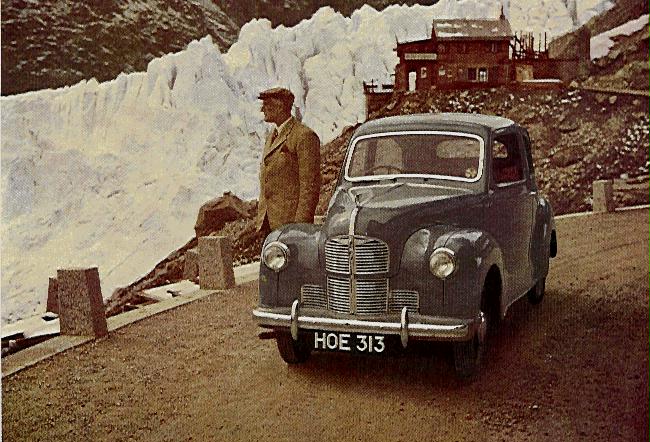|
|
|
|
|
|
|
|
| Prototype | Swiss Alps |




A very important stage in this train of events, which takes places towards the end of the development period, is the road testing of a prototype. In June of 1947 a team of Austin experts accompanied by Captain George Eyston, the famous racing motorist, took the A40 Devon and Dorset Saloon prototypes to the Swiss Alps - a particularly fortunate choice of country as far as The Austin Magazine is concerned as it enables us to include as background some of Europe's loveliest scenery, but, needless to say, this particular testing ground was decided upon for very much practical reasons.
The Alps, apart from their scenic beauty, also boast some of the world's most grueling motor roads, with gradients, bends and atmospheric changes which provide far more severe conditions than can be obtained in Britain.
Hills which, on the way up, mean continuous driving in low gear for fifteen miles or more and on the way down mean braking on and off for the same distance are searching tests for both transmission and brakes, not to mention the pulling power of the engine. The steering lock which can negotiate Swiss hairpin bends without reversing leaves little to be desired, and an ascent to the rare atmosphere of over 8,000 feet altitude in less than an hour will reveal even the slightest tendency to overheating.
The fact that the A40 came through more than ten consecutive days of such hammering without the least sign of strain speaks for itself, but by way of confirmation Captain Eyston has summed up their performance in these words: "I think these new Austins are a tribute to British craftsmanship at its best and they are, in my opinion, the finest light cars that Austin has yet produced."
